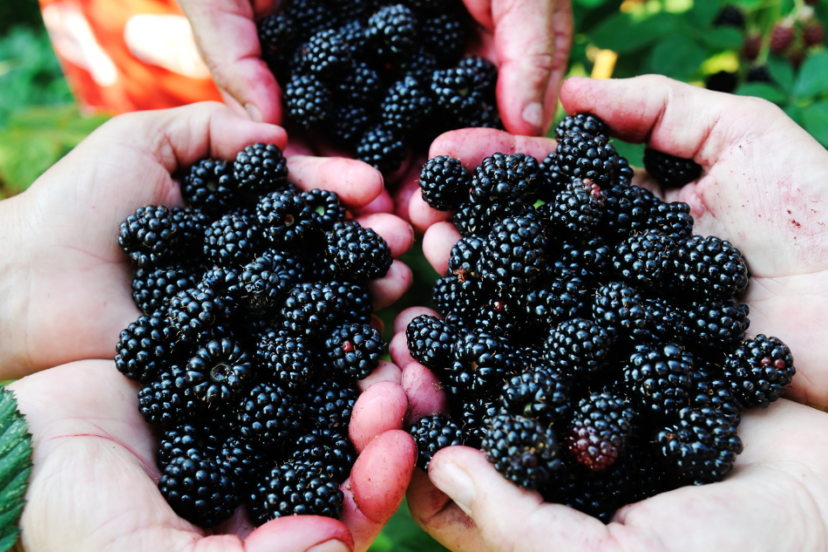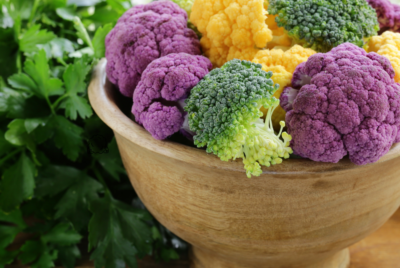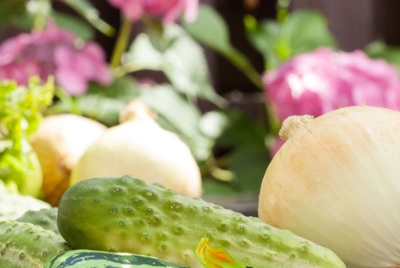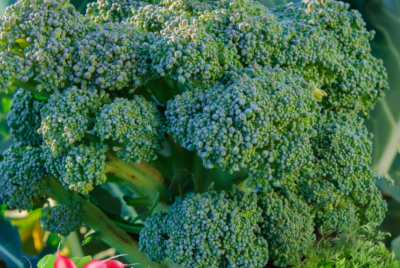Blackberry Companion Plants
Companion Planting Blackberries – A Beginner’s Guide In 10 Steps
Just dipping your toes into the world of gardening? Looking to add blackberries to your backyard bounty? Companion planting can be a game-changer for maximizing your harvest and creating a thriving garden ecosystem. In this beginner’s guide, we’ll walk you through 10 crucial steps to successfully companion plant blackberries in your garden. By following these tips, you’ll not only boost your blackberry yield but also promote a healthier, more vibrant garden overall. Let’s get started on this exciting gardening journey!
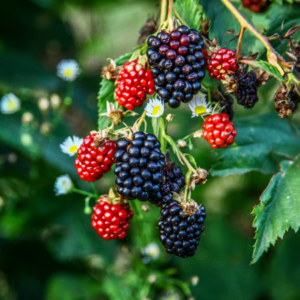
Key Takeaways:
- Companion planting benefits: Blackberries thrive when planted alongside compatible plants that offer mutual benefits, such as attracting pollinators or deterring pests.
- Choose the right companions: Good companion plants for blackberries include herbs like thyme and oregano, flowers such as marigolds, and vegetables like beans and peas.
- Avoid certain plants: Be cautious of planting blackberries near plants that are susceptible to the same pests or diseases to prevent cross-contamination.
- Provide proper care: Ensure that your blackberries receive adequate sunlight, water, and nutrients, regardless of their companion plants.
- Experiment and observe: Keep track of your companion planting arrangements and note which combinations work best for your blackberry plants in your specific growing conditions.
Getting Started with Blackberries
Selecting the Right Site
An important factor when starting with blackberries is choosing the right site. Assuming you’re a beginner, opt for a location that receives full sunlight for at least 6-8 hours a day. Blackberries thrive in well-drained soil, so ensure the area doesn’t have any standing water to prevent root rot.
Preparing the Soil for Planting
To ensure your blackberries grow healthily, prepare the soil before planting. An ideal soil pH for blackberries is around 5.5 to 6.5, slightly acidic. Getting a soil test kit can help you determine the pH level and if any amendments are needed, such as adding organic matter like compost.
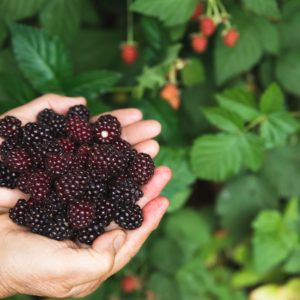
Choosing Companion Plants
Some plants can help blackberries thrive, while others can hinder their growth. Choosing the right companion plants for your blackberries is important for a successful garden.
Best Companion Plants for Blackberries
With the right companions, blackberries can benefit from improved soil health, pest control, and overall growth. Some of the best companion plants for blackberries include strawberries, chives, marigolds, and yarrow. These plants help attract beneficial insects, repel pests, and provide necessary nutrients for blackberry plants to flourish.
Plants to Avoid Near Blackberries
Blackberries do not thrive when planted near certain plants that can inhibit their growth or attract harmful pests. Some plants to avoid near blackberries include raspberries, currants, and black walnuts. These plants can compete for resources, transmit diseases, or release substances that inhibit blackberry growth.
For instance, planting raspberries near blackberries can increase the risk of spreading diseases like anthracnose. Black walnuts release a toxic substance called juglone, which can harm blackberry plants and inhibit their growth. It’s best to keep these plants separated to ensure the health and productivity of your blackberry plants.
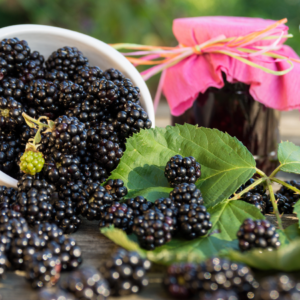
Planting and Maintenance
How to Plant Blackberries and Companions
Keep in mind that blackberries thrive in well-drained, fertile soil with full sun exposure. When planting, space blackberry bushes at least 3 feet apart and dig a hole that is deep and wide enough to accommodate the roots. Consider planting companion plants like chives, marigolds, or thyme nearby to help repel pests and attract beneficial insects.
Ongoing Care and Tips for Healthy Growth
With regular care and attention, your blackberry bushes can thrive for years to come. Prune blackberries in late winter or early spring to encourage new growth and increase fruit production. Ensure the soil is consistently moist but not waterlogged, and fertilize with a balanced organic fertilizer in the spring. Mulch around the base of the plants to retain moisture and suppress weeds.
- Prune blackberries in late winter or early spring.
- Water regularly to keep the soil moist but not waterlogged.
- Monitor for pests and diseases, and take action promptly if needed.
The key to successful blackberry growth is to provide them with the right conditions and care they need, ensuring a bountiful harvest for years to come. Knowing when and how to prune, water, and fertilize will help your blackberry bushes thrive.
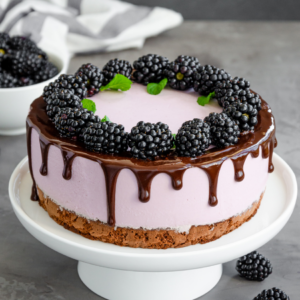
Planting Considerations
Planting your blackberries in well-drained soil with full sun exposure is crucial for their growth. Avoid planting them in areas prone to waterlogging, as this can lead to root rot. Additionally, regularly prune your bushes to encourage new growth and remove any diseased or dead canes. By taking these steps, you can ensure your blackberries and companion plants flourish in your garden.
Troubleshooting Common Issues
Managing Pests and Diseases
To ensure your blackberry plants thrive, it’s necessary to be aware of common pests and diseases that can affect them. Keep an eye out for pests like aphids, spider mites, and Japanese beetles. Diseases such as powdery mildew, cane blight, and root rot can also pose a threat to your plants. Regular monitoring and prompt action are key to managing these issues.
Addressing Nutrient Deficiencies and Soil Problems
On occasion, blackberry plants may show signs of nutrient deficiencies or soil problems that can impact their growth and health. Common issues include yellowing leaves, stunted growth, and poor fruit production. By testing your soil and addressing any deficiencies, such as nitrogen, phosphorus, or potassium, you can ensure your plants have the nutrients they need to flourish.
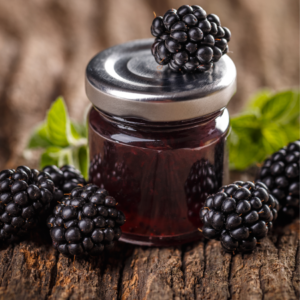
Harvesting and Using Your Produce
When and How to Harvest
One of the most exciting parts of growing blackberries is the harvest. Knowing the right time to pick your blackberries is crucial for getting the best flavor. Blackberries are ready to be harvested when they are fully black and easily come off the stem with a gentle tug. To avoid bruising, pick blackberries in the early morning when they are cool and firm.
Ideas for Enjoying Your Blackberries and Companions
Produce from your blackberry plants can be used in a variety of delicious ways. Enjoy your freshly picked blackberries on their own, or get creative by incorporating them into desserts like pies, jams, or smoothies. Blackberries also pair well with companion plants like mint, basil, and strawberries, adding depth to your dishes.
With blackberries being rich in antioxidants and nutrients, they not only taste delicious but also offer health benefits. Combine them with companion plants that enhance their flavor and nutritional profile to create mouth-watering dishes. Whether fresh or cooked, blackberries and their companions are versatile ingredients that can elevate your culinary creations.

Companion Planting Variations
Seasonal Considerations for Companion Planting
Despite the benefits of companion planting, it’s crucial to consider the seasons when choosing companion plants for your blackberries. Some plants thrive in different seasons, so make sure to select companions that will complement your blackberries during each specific time of the year. Planting the right companions at the right time can greatly enhance the health and productivity of your blackberry bushes.
Experimenting with Different Companion Combinations
On your gardening journey, don’t be afraid to experiment with different companion combinations for your blackberries. Trying out various plant pairings can help you discover the most successful companions for your specific growing conditions. Test different plants next to your blackberries and observe how they interact and influence each other’s growth and health.
To get started, consider factors like sunlight, soil type, and moisture levels when pairing companions with your blackberries. Some plants may compete for resources, while others may provide beneficial attributes like pest protection or nutrient absorption. Keep a journal of your observations and results to track which companions work best for your blackberries.
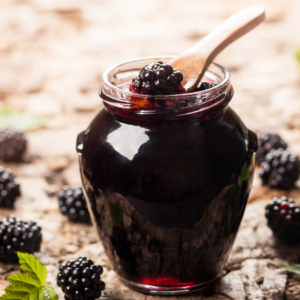
Expanding Your Blackberry Patch
Propagating Blackberries
For an easy way to expand your blackberry patch, try propagating blackberries. You can do this by taking cuttings from your existing blackberry plants and transplanting them into new areas of your garden. Make sure to select healthy, disease-free stems for best results. With proper care and maintenance, these cuttings will grow into productive blackberry bushes in no time.
Introducing New Companions Over Time
On your journey to expand your blackberry patch, consider introducing new companion plants gradually over time. Adding a variety of beneficial plants can enhance the overall health of your blackberry bushes and improve their yield. Some great companions for blackberries include plants that attract pollinators, deter pests, or improve soil quality. By carefully selecting new companions and observing how they interact with your blackberries, you can create a thriving ecosystem in your garden.
A good tip is to start with a few new companion plants each season to avoid overwhelming your blackberry patch. Keep an eye out for any negative interactions such as overcrowding or competition for resources. Remember that a diverse garden is a healthy garden!

Real-Life Success Stories
Stories from Beginner Gardeners
Once again, the magic of companion planting unfolds in the stories shared by beginner gardeners who successfully paired blackberries with companion plants. To them, it was not just about the increased yield or pest control, but about a sense of pride and joy in nurturing a flourishing garden ecosystem.
Tips and Tricks from the Community
Once again, the gardening community proves to be a valuable resource for new gardeners seeking advice on companion planting blackberries. The tips and tricks shared range from recommended companion plants to planting techniques, all aimed at maximizing the benefits of companion planting. Any gardener can find valuable insights from the collective wisdom of the community.
- Choose companion plants wisely to deter pests naturally.
- Interplant herbs like mint and thyme to attract beneficial insects.
- Space plants properly to avoid competition for nutrients and sunlight.
Tips: When incorporating companion planting in your blackberry garden, consider the specific needs of your plants and the symbiotic relationships between them. By following the advice of experienced gardeners, you can create a harmonious and thriving garden that benefits all its inhabitants. Any additional insights or experiences shared by the community can further enhance your gardening journey.
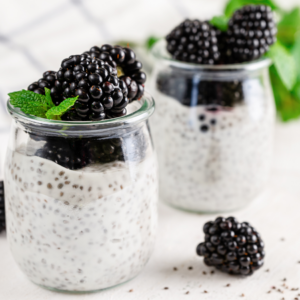
Final Words
To wrap up, companion planting blackberries can be a fun and rewarding experience for beginners. By following these 10 steps, you can enhance the health and yield of your blackberry plants while also creating a more diverse and vibrant garden. If you’re looking to further boost your blackberry harvest, consider exploring these 19 companion plants that can complement your blackberry bushes in 2023. Happy gardening!
FAQ
Q: What is companion planting for blackberries?
A: Companion planting for blackberries involves growing certain plants alongside blackberry bushes to improve growth, repel pests, and enhance the overall health of the blackberry plants.
Q: Why is companion planting beneficial for blackberries?
A: Companion planting for blackberries can help attract beneficial insects, improve soil health, enhance flavor, and increase yields of blackberry plants.
Q: What are some good companion plants for blackberries?
A: Some good companion plants for blackberries include chives, garlic, marigolds, and yarrow, which can help deter pests and improve the growth of blackberry bushes.
Q: How do I plant companion plants with blackberries?
A: When planting companion plants with blackberries, make sure to space them appropriately, consider their sunlight and water requirements, and avoid planting plants that compete with blackberries for nutrients.
Q: Are there any plants that should be avoided as companions for blackberries?
A: Yes, plants such as raspberries, tomatoes, and potatoes should be avoided as companions for blackberries as they may compete for nutrients or attract pests that can harm the blackberry bushes.
Feel free to ask any more questions you may have about companion planting for blackberries!
Tips for Growing Tangerine Trees
How to Plant, Grow and Care for Citrus Trees

